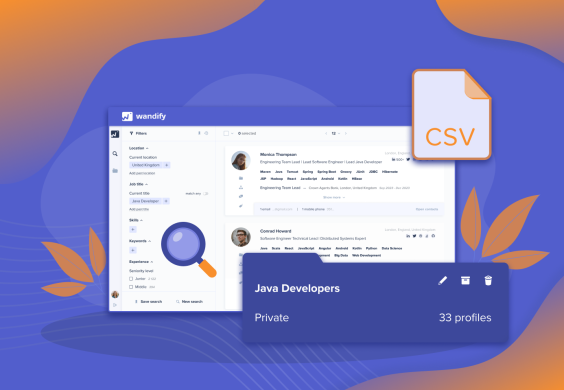According to The Society for Human Resource Management (SHRM), the average cost per hire has seen a significant uptick, jumping from $4,129 in 2019 to $4,700 in 2023—a substantial 14% increase in just four years. This escalation in recruitment expenses is putting pressure on HR budgets and forcing organizations to rethink their hiring strategies.
As businesses navigate this challenging terrain, finding ways to optimize the recruitment process and reduce costs without compromising on the quality of hires has become paramount. From leveraging technology and streamlining workflows to tapping into alternative talent pools, companies are exploring innovative approaches to curb their hiring expenses. In this article, we’ll explore effective approaches that can help organizations lower their cost per hire while still attracting top-tier talent in an increasingly competitive job market.
Structured Hiring for Consistent Success
Structured hiring practices offer a range of benefits that significantly enhance the recruitment process and overall business success:
- Increased Revenue and Profitability: Companies with effective talent management practices experience 2.5 times higher revenue growth and 1.5 times greater profitability (McKinsey & Company).
- Accurate Talent Forecasting: A consistent, data-driven hiring pipeline enables precise forecasting of talent needs for both short- and long-term goals.
- Cost Savings: Structured hiring leads to repeatable processes and measurable outcomes, empowering recruiters to make informed decisions, resulting in reduced recruitment costs and a higher return on investment.
- Enhanced Candidate Experience: Streamlined and standardized processes improve the overall candidate journey, increasing satisfaction and engagement.
- Stronger Employer Branding: A positive and consistent hiring experience strengthens your company’s reputation, making it more attractive to top talent.
- Higher Employee Retention: By selecting the right individuals for the role, structured hiring reduces turnover and improves employee retention rates.
- Improved Diversity and Inclusion: Objective evaluation criteria help ensure fair and unbiased hiring, leading to a more diverse and inclusive workforce.
- Boosted Innovation and Competitive Advantage: A highly skilled, diverse, and engaged workforce drives innovation and gives companies a competitive edge in the market.
Result: By adopting structured hiring, companies can build a more efficient, sustainable recruitment process while achieving long-term success.
“Smart hiring strategies do more than just cut costs like recruitment and training—they build stronger teams, accelerate productivity, and drive long-term success.” — Taisiia Mliuzan, CPO of Wandify
Employee Referrals and Internal Hiring
Sometimes the best talent is already within your organization. Internal hiring and employee referrals are not only cost-effective but also lead to higher retention and faster onboarding. While this approach may seem obvious, it’s worth emphasizing for the following reasons:
- Cost Savings: Internal recruitment costs an average of 18% less than external recruiting, saving companies significant resources.
- Higher Retention: Employees who are promoted internally stay at the company 41% longer, reducing turnover and the associated costs.
- Time Efficiency: Internal hiring eliminates the need for posting jobs on external boards, conducting multiple rounds of interviews, and extensive onboarding.
- Faster Onboarding: Training internal hires for a new role is easier because they already understand company operations and processes.
- Culture Fit: Internal candidates are already familiar with and aligned to the company culture, reducing the risk of a poor cultural fit.
- Employee Engagement: Encouraging internal promotions and referrals boosts morale and shows employees that growth opportunities are available within the company.
Result: It brings in terms of cost savings, efficiency, and retention, you can tap into talent you already trust, driving long-term success for your organization.
Focus on Potential, Not Just Experience
Focusing on a candidate’s potential, rather than solely on their experience, can significantly expand your talent pool while reducing hiring costs. Here are the key benefits of hiring for potential and how to implement this strategy effectively:
- Broaden Your Talent Pool: By prioritizing potential, you open your hiring process to candidates who may not have extensive experience but possess the skills and drive to grow into the role.
- Foster Innovation: Fresh perspectives from candidates with untapped potential can lead to new ideas and innovative solutions within your teams.
- Invest in Development: Offering training and development opportunities allows you to mold high-potential candidates into top performers, often at a lower cost than hiring more experienced professionals.
- Increase Retention: Investing in the growth of less experienced employees fosters loyalty, as they recognize the company’s commitment to their career development.
- Future-Proof Your Workforce: Hiring for potential ensures that your workforce is adaptable and capable of evolving with future business needs.
- Lower Salary Expectations: Candidates with less experience may have lower salary demands, allowing your company to make cost-effective hires without sacrificing talent.
Result: Invest in growth, and build a more flexible and innovative workforce.
Automate Routine Recruitment Tasks
Automating routine tasks in recruitment can significantly streamline your hiring process, allowing HR teams to focus on higher-value activities. Here’s how automation can help:
- Save Time: Automate tasks like scheduling interviews, sending follow-up emails, and candidate reminders, freeing up valuable time for recruiters.
- Improve Accuracy: Reduce human error by automating repetitive tasks, ensuring consistent communication and smoother candidate management.
- Boost Productivity: Allow HR teams to focus on strategic areas such as talent engagement and relationship-building by offloading administrative work to automation tools.
- Enhance Candidate Experience: Speed up the recruitment process by delivering timely responses and updates to candidates, improving their experience.
- Scalable Solution: Automation can handle an increasing volume of tasks as your recruitment needs grow, making it an efficient, scalable solution.
Result: Recruitment teams can optimize efficiency and focus on driving strategic value with implementing automation tools.
Data to Drive Smarter Recruitment Decisions
Data is a powerful tool for optimizing your recruitment process and improving results. Here’s how leveraging data can make your hiring more effective:
- Review Past Recruitment Data: Analyze previous hiring efforts to determine which channels and methods were the most successful. This helps you focus resources on proven strategies, reducing unnecessary costs.
- Track Key Metrics: Monitor KPIs such as time to hire, cost per hire, and candidate source effectiveness. Tracking these metrics allows you to refine your recruitment strategies, eliminating inefficiencies and improving performance.
- Refresh Your Candidate Database with Wandify API: Don’t rely on outdated candidate information in your CRM or ATS. With Wandify’s API, you can enrich and upgrade existing candidate profiles with the latest data, ensuring you’re working with the most accurate and up-to-date information. This makes it easier to reconnect with candidates and improve the chances of successful placements.
- Improve Hiring Forecasting: Data-driven insights allow you to better predict future hiring needs, ensuring your recruitment efforts are aligned with your business goals.
Result: By leveraging data and keeping your candidate information up-to-date, you can streamline your recruitment process and ensure better hiring outcomes.
Smarter Hiring for Sustainable Savings
Today reducing recruitment costs without compromising the quality of your hires is more critical than ever. By implementing structured hiring practices, prioritizing internal talent, focusing on candidates’ potential, and leveraging automation and data-driven insights, you can optimize your recruitment strategies and achieve long-term success. Whether it’s cutting costs, boosting employee retention, or driving innovation, the right approach to talent acquisition empowers your organization to stay ahead of the curve.


